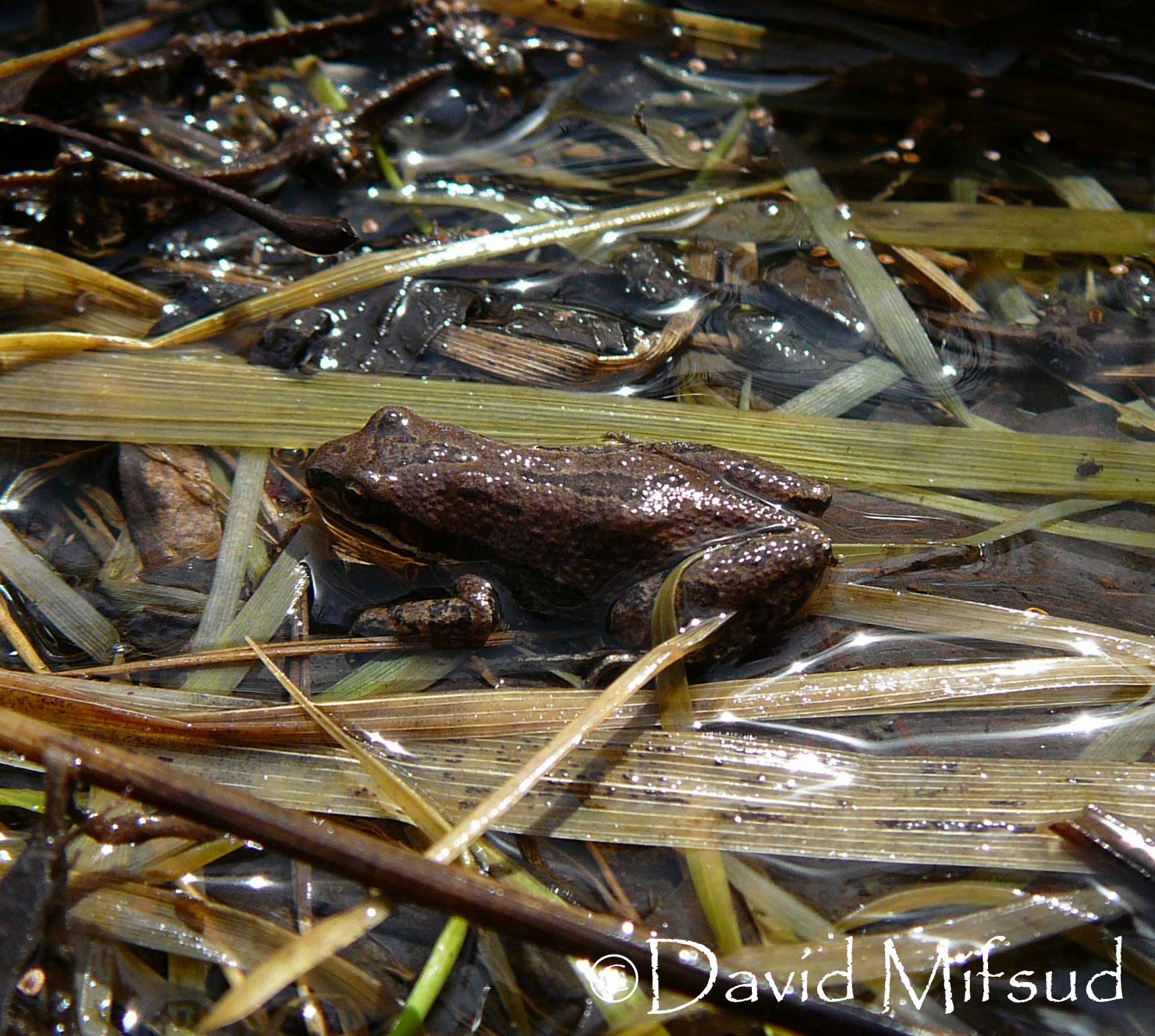
Pseudacris triseriata triseriata
Identifying Features
- 1 to 1.5 inches long; brown with dark stripes on its back and a dark band through its eye.
- Relatively common to locally abundant, but recent declines have been noted in suburban and agricultural areas.
- Generally inhabits marshes, meadows, swales, and other ope n habitats, often adjacent to agriculture. Occasionally occur in damp woods and wooded swamps.
- Remain near breeding sites year round – hidden beneath logs, rocks, leaf litter, or in loose soil.
- Dead grasses and reeds are important near breeding sites for concealment.
Call
- "It, it, it,” increasing in speed and pitch like a fingernail along a comb.
Breeding
- Calling occurs from mid-March to late May, but most egg laying occurs in April.
- Female lays from 500-1500 eggs in several loose, gelatinous clusters attached to submerged grasses or sticks. Each cluster contains 20-300 eggs.
Development
- Eggs hatch in 3-14 days. Tadpoles metamorphose in 40-90 days depending on temperatures.
- Sexually mature in one year.
- In drought years, vernal pools may dry up before metamorphosis takes place.
Habitat Type
- Permanent wetlands.
- Grasslands and savannas.
